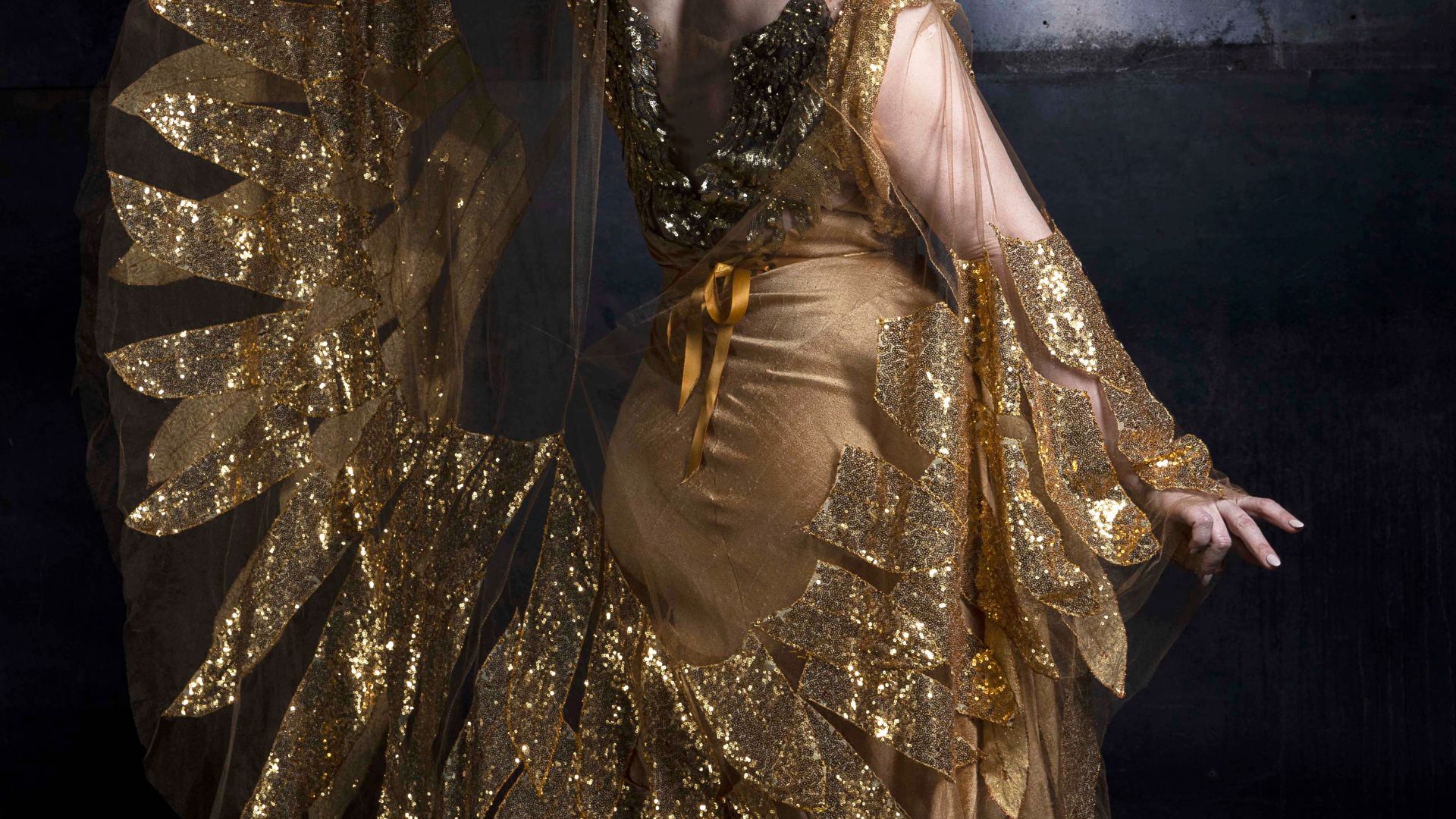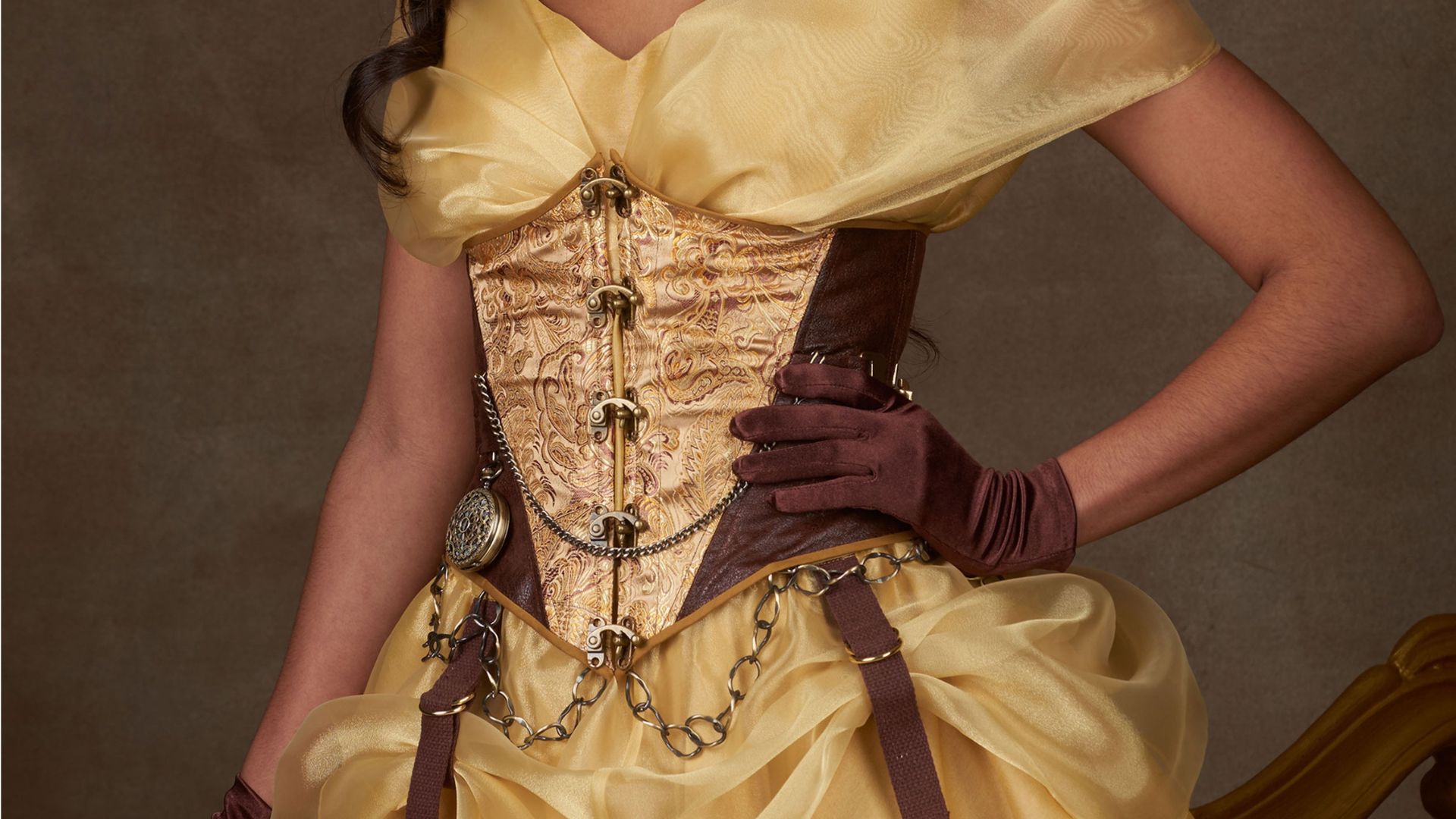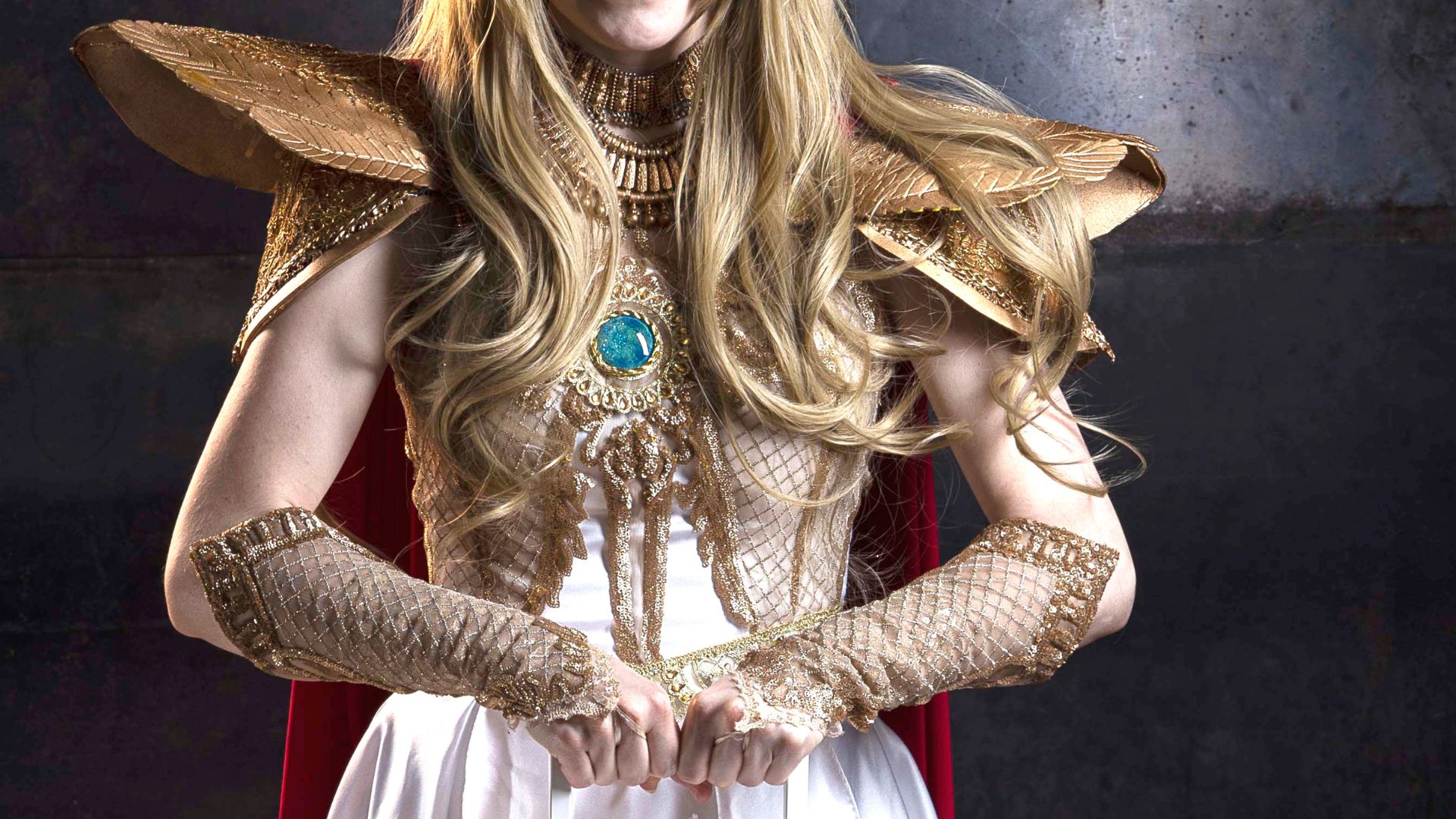 | ||
| Your browser is not supported. | ||
|
Please browse our site using any of the following options:
| ||
Discover Cosplay Fabrics At Spotlight

When making your own cosplay costume, finding the right cosplay fabrics and materials can be one of the hardest parts of putting your costume together. Finding fabric for cosplay that has the texture and colour you need can have you rushing between stores and wasting a lot of time travelling - but luckily for you, there's one store that stocks all the fabrics you need to create a faithful cosplay that will bring your character to life!
Spotlight's selection of dress and apparel fabrics contains thousands of different materials, in all sorts of colours, patterns and fabric types. Spotlight also has a mammoth collection of buttons, ribbons, trims and other extras to put the finishing touches on your outfits, as well as cosplay EVA foam for extra-special pieces.
But which fabric for cosplay should you choose out of this enormous collection? Let's dive into each material type, what it is used for and how tricky it can be to manipulate for your cosplay needs.
Quick Links
- Why Do Cosplay Fabrics Matter?
- What Kinds Of Cosplay Fabrics Can I Find At Spotlight?
- Woven VS Knit Fabrics
- Every cosplayer's best friend - EVA Foam
- Cosplay Costume Extras
Why Do Cosplay Fabrics Matter?
Once you start creating outfits for cosplay, you'll soon discover you can't just pick any old fabric off the shelf - even if it is the exact colour you need. Here are just a few ways your fabric can affect your cosplay endeavours:
- How it drapes over the body - some fabrics, like silk or cotton, will naturally drape closer to your skin. Others like linen or tulle will stand stiffer and away from the body, creating a different silhouette for your cosplay costume. Each will be more suitable for a different look, so make sure to choose the right fabric for how you need the material to hang from your body.
- How hard or easy it is to sew - if you are a beginner cosplayer, certain materials can be much harder to sew than others. Slippery fabrics like silk, thick materials like faux fur and certain knits can all be tricky to use, as they can slide around on your sewing machine or need their own special needle to punch through. Try to find an easier, similar fabric for cosplay or be very, very careful if you absolutely must use one of these materials for your cosplay costume.
- How comfortable you are on the day - cosplaying can be an uncomfortable hobby, as costumes can be large, heavy and even have multiple props paired with them. Certain fabrics can make you feel much hotter on the day than you would otherwise, causing you to sweat and any facial makeup and headpieces you're wearing to suffer. Synthetic materials are the biggest contenders for this, while natural materials like cotton and linen will work to keep you cool instead.
- How it folds up for travel - if you need to pop your costume into a suitcase for travel, consider what kinds of fabric will crease and scrunch worse than others, as well as if you will be able to iron your cosplay costume once you arrive. Linen is notorious for its creases, while polyester will hardly ever wrinkle.
As you can see, your choice of cosplay fabrics can affect how hard it is to make your costume, maintain it and wear it on the day of your event or shoot. Check the cleaning instructions of your chosen material carefully as well, as you'll want to be able to clean and re-wear any cosplay you put a lot of hard work into!
What Kinds Of Cosplay Fabrics Can I Find At Spotlight?
Ready to choose your material? Let's go through some of the amazing cosplay-friendly fabrics you can find at Spotlight in this quick cosplay fabric guide:
Cotton
This all-purpose fabric comes in a huge range of colours and is the perfect material for beginners to start with. It comes in many different types, like cotton poplin or jersey, and is usually a light or medium-weight fabric.
Polyester
This affordable material is made of plastic and is one that will warm you up very quickly. It won't iron well and is hard to dye, but can be used to make simple accessories and won't wrinkle easily.
Linen
While it wrinkles easily, linen and linen blends are durable and breathable. It is perfect for cosplaying in a hot climate or just for creating a more summery costume that you'll feel comfortable wearing.
Velvet
Fuzzy with a subtle sheen, velvet and velveteen are usually used for creating grand cosplay costume pieces like royal cloaks or medieval dresses. It has an enchanting, 'expensive' look to it, but can be hard to work with due to its slipperiness.
Silk or satin
These slippery, shiny fabrics can be quite tricky to push through a sewing machine but will create an elegant costume if wielded correctly. Beware of low-quality satin, which can look overly shiny and may give your cosplay a 'fake' look.
Organza, chiffon and tulle
Tulle is a netted fabric, while chiffon and organza are transparent materials perfect for layering and creating volume in your cosplay. They can also be used to create a veil or flowing train.
Wool
Warm and thick, wool is great for making overcoats, beanies and gloves. It will heat you up, so beware of wearing thick layers and wool on a hot day.
Spandex
This stretchy knit fabric is usually used for making skin-tight costumes and bodysuits. It's perfect if you want to create a superhero costume!
Leather/faux leather
Real leather can be tricky to work with and bit a bit pricey, but will last you a long time. Faux leather is easier to use and a lot cheaper, but it can come off in 'flakes' if you're not careful with it. Use it to create light armour and accessories like belts, pouches and gloves.
Faux fur
Our faux fur is easier to work with than real fur and comes in a wider range of colours and patterns than the real thing too! Use faux fur for trims on collars and sleeves, or even to line a hood.
If you need more detail than what is provided in this cosplay fabric guide, read through our dressmaking materials buying guide.

Woven VS Knit Fabrics
Besides material, how your cosplay fabrics are made can inform how you use them and how easy they are to wear. There are two ways you will find fabric made here at Spotlight: woven and knitted.
Woven fabric
On the technical side, woven fabric is made by weaving two sets of yarn together on a loom. If you look closely, woven fabric has a checkered appearance like a chess board - the threads go over and under each other evenly, at right angles.
Woven fabric is generally a little easier to work with for beginners, as it doesn't stretch and will behave as you feed it through a sewing machine. Woven fabric is usually rigid, durable and a little more coarse than knitted fabric. It is also prone to wrinkling, so you'll need to consider ironing any cosplay costumes made with woven fabric.
Knitted fabric
Most knitted fabric is made by interlocking yarn together using needles. If you look closely at a knitted material, you will see heaps of tiny little loops! The loops will either run up and down (warp) or back and forth (weft). The loops mean that knitted fabric is soft, stretchy and resistant to wrinkling. However, it isn't as durable as woven fabric and is harder to sew using a sewing machine.
Every Cosplayer's Best Friend - Cosplay Eva Foam
Making clothing for your cosplay is all well and good - but what if your character wears armour, or has weapons? Rather than racking your brain trying to figure out how to make some sequined material pass for a helmet, turn to cosplay EVA foam!
What is cosplay EVA foam and what can I make with it?
EVA stands for ethylene vinyl acetate and is a great alternative to using traditional plastics to make cosplay accessories. It is commonly used to make pool noodles, thongs, yoga mats and as padding for sports equipment. Cosplay EVA foam at Spotlight is sold in sheets of varying thicknesses, with a smooth surface that makes cutting and sanding easy.
When it comes to cosplay, EVA foam is often used to make imitation metal. So armour pieces like gauntlets and chest plates, weapons like shields and daggers and accessories like crowns, necklaces, buttons and other trinkets essential to your character.
How to use EVA foam for cosplay
EVA foam can be cut and moulded to create amazing shapes. Carve your EVA foam with a very sharp hobby knife on a safe surface, like a table with a cutting mat. You can also use a sanding tool or sandpaper to gently smooth your EVA sheets if needed.
To mould EVA foam into shapes, it needs to be heated with a hot air gun. Once you see the surface of the foam change, turn off the heat and mould it to your desired shape. When it cools, the foam will stay in shape permanently.
You can sew EVA foam by hand if needed. Thinner pieces can also go through a sewing machine! But the most common way to join cosplay EVA foam pieces together is with craft glue - try super glue if you don't mind the mess or a contact cement if you want to have a substance that washes off your hands easily. Avoid hot glue guns if you still need to heat your foam, as it will re-melt under the heat of a hot air gun.
How to seal and paint EVA foam
We recommend using a flexible acrylic paint to colour your EVA foam, so if it does decide to flex a little, the paint won't crack and flake off. You should also use a similarly-flexible primer so your paint has the best surface possible to adhere to.
To create a strong finishing barrier you may wish to seal and harden your cosplay EVA foam. You can use a few layers of a glue like Mod Podge over the top, or for a more professional finish, try using clear epoxy resin instead.

Cosplay Costume Extras
Once you have the major parts of your cosplay costume sorted, you can look to the finer details that will really set your costume apart from the rest.
- Ribbons and trims - the level of detail you add to a cosplay costume can go a long way, and one of the best ways to add detail is using ribbons and trims. Add a little something special to collars, sleeves, pockets and edging by adding the perfect Spotlight trim.
- Ornate buttons - buttons add texture, colour and sometimes even shine to a costume. Even if you've secretly made your costume a zip-up, buttons add a level of detail anyone will appreciate - plus practising sewing buttons is a life skill you definitely love having in the future.
- Styled wigs - getting your own hair to match a character's can involve cutting, dyeing and styling it for hours, plus it can be an expensive process if you need professional help. Skip all this by using any of Spotlight's colourful costume wigs, plus a wig cap if you need to keep your own hair in check.
For more useful costume accessories, browse our range online or in-store!
Discover Amazing Cosplay Fabrics At Spotlight
At Spotlight we have all the costume fabrics, EVA foam and accessories you need to bring any character to life. Browse the full range online, or visit your nearest Spotlight store and our knowledgeable team will help you find the right materials for your next cosplay.
Want more cosplay tips? Check out our blog articles on cosplay costume ideas and cosplay tips from professionals.




